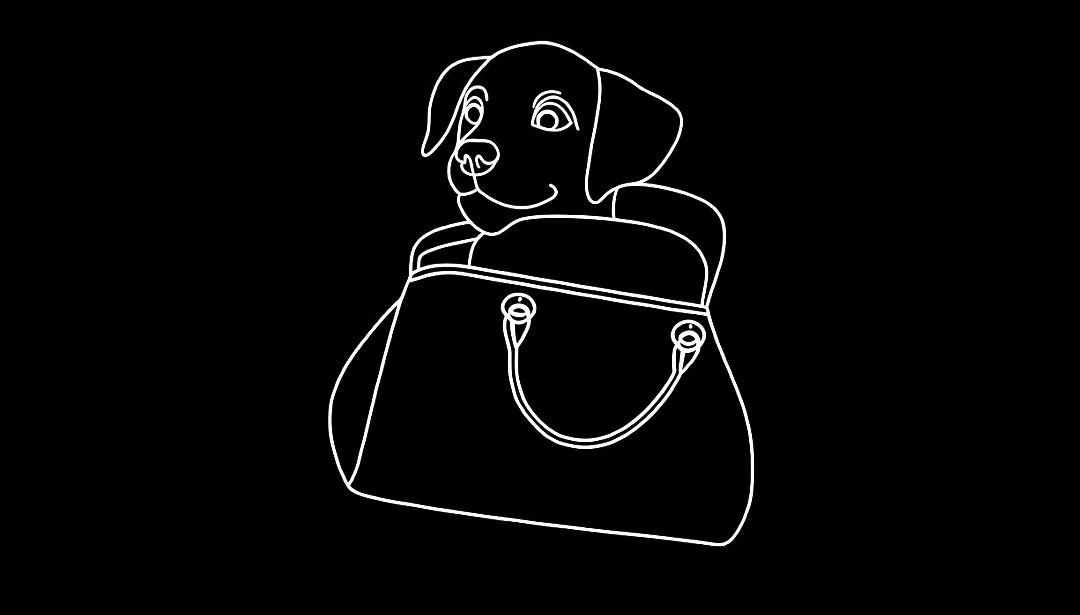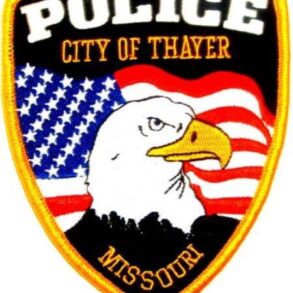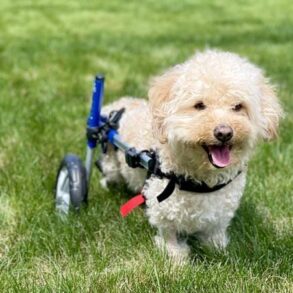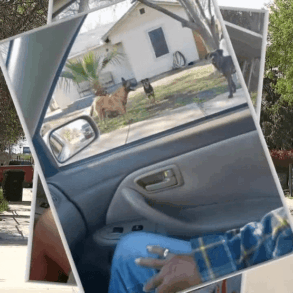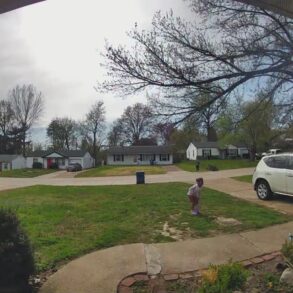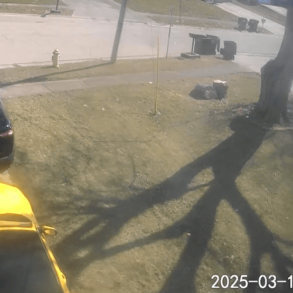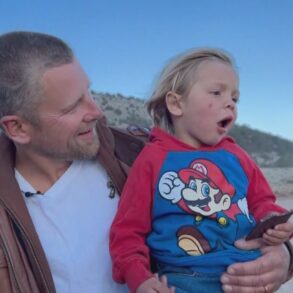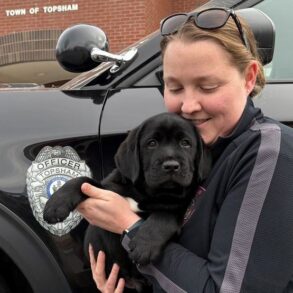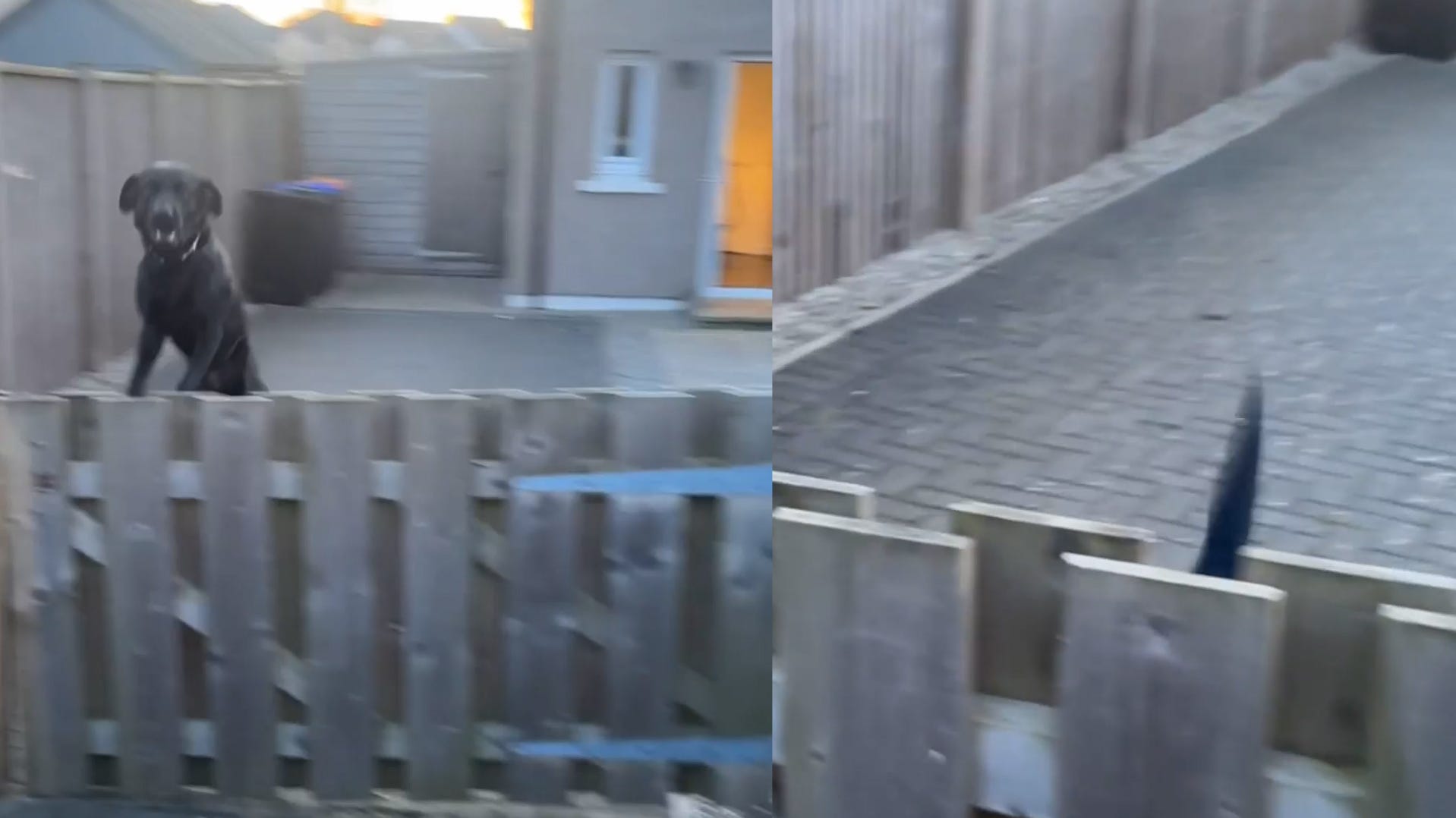
Excited dog gets a spring in his step when owner comes home
In Peterhead, UK, an energetic pup named Broxi greets its owner by leaping up and down, whether he’s been gone for five minutes or five days.
- Understanding a dog’s body language can strengthen the human-animal bond and help identify potential health or behavioral issues.
Dogs make a range of noises – from barking to growling and panting – to communicate. Much like their human owners, they also rely on nonverbal body language to convey their emotions.
By listening to these cues, including tail wagging and lip licking, humans can deepen their relationships with their canine companions.
“When we learn to recognize our dog’s communication, we can set them up for success within their boundaries and also identify situations where they may need more support or training,” Harmony Diers, a veterinary technician and project manager for the Dog Aging Project at the Texas A&M College of Veterinary Medicine and Biomedical Sciences, said in a news release.
Here’s a few tips on how to read your dog’s body language.
Signs that your dog is content
There is no single telltale sign that indicates whether a dog is feeling relaxed. Instead, the American Kennel Club recommends that pet owners look at all indicators across the dog’s body, from the way it is moving its tail to the shape of its eyes, to decipher its mood.
For instance, people often mistake a dog’s wagging tail as a sign of happiness, but the American Kennel Club suggests that the wagging movement only indicates that the dog is emotionally aroused. A slower, side-to-side tail wag shows that the dog is relaxed, while a faster, twitchy wag might mean that the dog is experiencing negative emotions.
If a dog is wagging its tail in a circular motion, Diers said it’s a good sign that the dog is happy.
A good way to confirm the dog’s emotion is by looking at its eyes. If the dog is relaxed, it may have soft eyes, making it look like it is squinting, Diers said, according to the news release.
How to know when your dog is agitated
Identifying an anxious or aggressive dog can be tricky, as negative and positive emotional indicators can often be confused.
In her book On Talking Terms With Dogs: Calming Signals, Turid Rugaas notes that dogs yawn to calm themselves down in stressful situations, not because they’re tired. She recommends that humans yawn back at dogs to provide them emotional support.
Lip licking is another confusing signal from canines. It could mean they’re hungry, or that their anxious, according to the American Kennel Club. Diers recommends looking for tense lips that are pulled back or lifted over the teeth.
Those signs, accompanied by a menacing growl and a hard stare often suggest that the dog is feeling threatened.
Red flags to recognize in a sick dog
Reading your dog’s body language can also help you identify potential health concerns. Sick dogs may sleep more and hide from their owners because they are feeling vulnerable.
Other signs to look out for include limping, a tucked belly, tense posture and whimpering, Diers suggested.
“Ultimately, if your normally active and happy dog starts to isolate and show lethargy and/or decreased appetite, this is a sign that something has changed with their overall health,” Diers said.
This post was originally published on this site be sure to check out more of their content.
